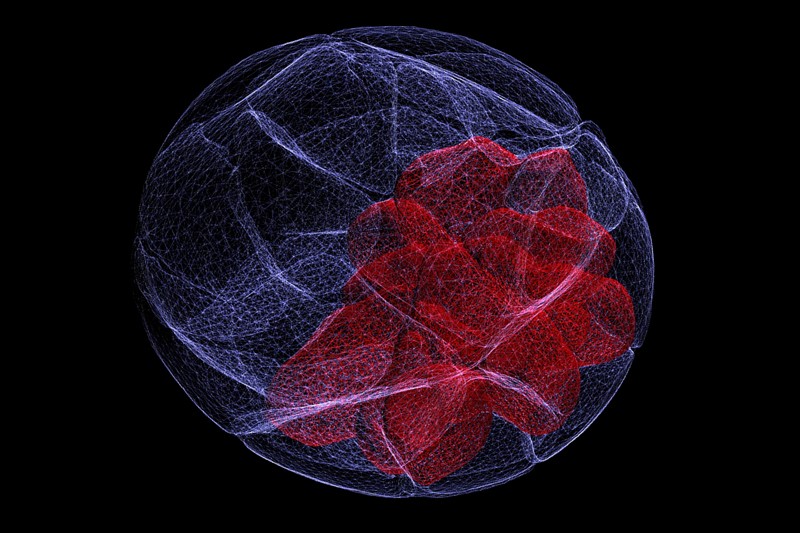(원문)
Genome-editing technique enables researchers to trace lineage of cells in developing mice.
Researchers have used gene-editing to track the cell-by-cell development of a mouse embryo. Credit: Agnieszka Jedrusik and Magdalena Zernicka-Goetz, Gurdon Institute. CC0
For the first time, scientists have wielded CRISPR to track a mammal’s development from a single egg into an embryo with millions of cells. The technological feat brings biologists a step closer to being able to trace the history of every one of the billions of cells in complex animals such as mice — offering an unprecedented window into development and disease. The work was published1 on 8 August in Science.
“This has been the holy grail for a while,” says Aaron McKenna, a geneticist at the University of Washington in Seattle, who was part of a previous effort that used CRISPR to study zebrafish development2. “It was great to see this paper come out.”
Over the years, biologists have used a variety of methods to track an organism’s development cell by cell, such as labelling them with dyes. But these tools are unable to follow cells through many divisions, let alone over an organism’s entire life. In the past two years, however, CRISPR–Cas9 genome editing has emerged as a potent tool for monitoring development in exquisite detail.
In zebrafish, for example, researchers have engineered special genetic sequences into the genome that act like recording tape2. CRISPR leaves its mark on these sequences by adding or deleting DNA, giving each cell a unique genetic barcode. These edits accumulate as the cells divide. By reading off the barcodes, scientists can reconstruct a cellular family tree, or lineage, showing how cells relate to each other.
Level up
Mammals such as mice have vastly more cells than do zebrafish. To track their development using CRISPR, a team led by Reza Kalhor, a molecular biologist at Harvard Medical School in Boston, Massachusetts, bred a line of mice that contained 60 of these barcoding sites scattered throughout their genomes — enough, in theory, to give a unique tag to each of an adult mouse’s 10 billion cells.
When the researchers looked at the pattern of mutations that accumulated in the barcodes of 12-day-old mouse embryos, they were able to trace the histories of cells in each embryo’s primitive heart and limbs, as well as its placenta.
The team also showed how barcoding can help to answer open questions about a mammal’s development. By examining brain tissue from embryos, they found that the barcode patterns were more similar between equivalent regions of the left and right side of the brain — indicating they had formed from recent cell divisions — than between cells from different regions of the same side. This pattern suggests that the axis that runs from front to back of the brain is formed before the one that runs from left to right — a timeline that neuroscientists have struggled to pin down with existing tools.
Jan Philipp Junker, a systems biologist at the Max Delbrück Center for Molecular Medicine in Berlin, says the study is an “important development”. He adds, however, that the way in which the authors have read out the barcodes — by looking at a collection of cells in a tissue sample rather than examining individual cells — currently prevents them from tracing out the cells’ lineage in fine detail, with the entire history of divisions plotted out. Kalhor says that the group is keen to explore methods for quickly reading out barcodes from individual cells in the future.
Tracing cell lineages in mice could be a useful tool for understanding the cellular basis for human disease, says McKenna. Cancer researchers, for example, could breed the barcode strain with their own mouse models of cancer to examine in detail how the disease disrupts cell division. “I think we’re a little way from that,” he says, “but this is a big step forward.”
